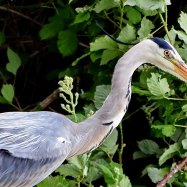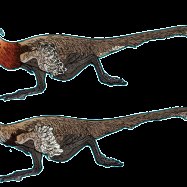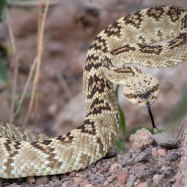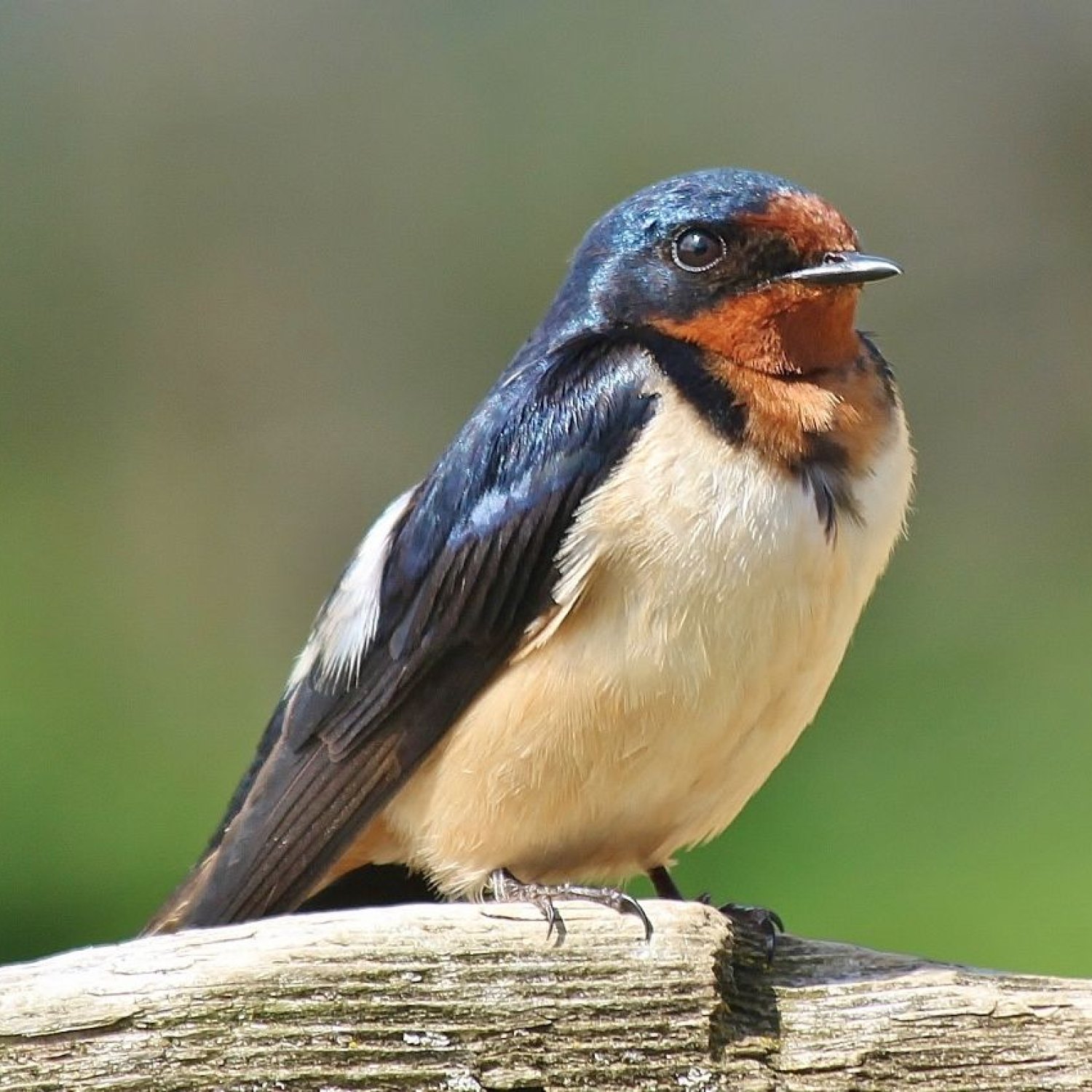
Swallow
Varies depending on species
Swallows are slender birds with streamlined bodies, belonging to the family Hirundinidae. They range in size and can be found in various habitats around the world. These birds are known for their graceful flight and their ability to catch insects on the wing. Keep an eye out for these beautiful creatures during your nature walks - they may surprise you with their aerial acrobatics! #swallows #birds #naturelovers
Animal Details Summary:
Common Name: Swallow
Kingdom: Animalia
Habitat: Open habitats such as grasslands, meadows, savannahs, and open woodlands
The Fascinating Facts About Swallows: A Master of the Sky
The swallow, scientifically known as Hirundinidae, is a bird that has captured the hearts and imaginations of people all over the world for centuries. From its notable migratory routes to its unique body shape and feeding methods, this bird has a plethora of fascinating features that make it stand out from other avian species. So, let's dive into the world of swallows and discover what makes them such skilled and beloved creatures.The Basic Information About Swallows
The swallow is a member of the animal kingdom, phylum Chordata, and class Aves, making it a true bird in every sense of the word Swallow. It belongs to the order Passeriformes, which includes more than half of all bird species, and the family Hirundinidae, which consists of around 80 species of swallows and martins.The scientific name of the swallow, Hirundinidae, comes from the Latin word "hirundo," meaning "swallow." Interestingly, this bird is named after its swift and graceful flight, which is known as "swallowing" in old English. Its common name, swallow, also comes from this same meaning.
The Habitat and Geographical Distribution of Swallows
Swallows are highly adaptable birds that can be found in various habitats all around the world. They are commonly found in open habitats, such as grasslands, meadows, savannahs, and open woodlands. This bird is a true master of the sky and can thrive in almost any environment, from deserts to mountains, and even on islands.Although the swallow is found on all continents except Antarctica, its geographical distribution varies depending on the species. Some swallows, such as the tree swallow, are native to North America, while others, like the barn swallow, are widespread throughout Europe, Asia, Africa, and the Americas Sumatran Tiger. The country of origin for each swallow species also varies, highlighting the diversity of this avian family.
The Appearance of Swallows
One of the most captivating aspects of swallows is their striking appearance. With their slender and streamlined bodies, these birds are built for speed and maneuverability. Their wings are long and narrow, allowing them to make sharp turns and rapid changes in direction while flying.Swallows also have distinct coloring, which differs depending on the species. For instance, the tree swallow has a metallic blue-green back, white belly, and a rusty-red throat. On the other hand, the barn swallow has glossy blue-black upperparts, a rusty-red breast, and a long, deeply forked tail.
The Feeding Method of Swallows
As insectivores, swallows have a unique feeding method that sets them apart from other birds. They are aerial hunters, meaning they catch their prey while flying. These birds have a large mouth opening, a slight hook on the end of their beaks, and long, pointed wings that allow them to chase and capture insects with ease.Swallows have a diverse diet, consisting mainly of flying insects, such as flies, mosquitoes, beetles, and moths. They use their exceptional flying skills to catch their prey in mid-air, often performing acrobatic maneuvers while hunting.
The Migratory Patterns of Swallows
One of the most remarkable attributes of swallows is their extensive migration patterns. Like other migratory birds, swallows fly thousands of miles each year, traveling from one part of the globe to the other in search of food and suitable breeding grounds.The migration routes of swallows vary depending on the species, with some traveling from North America to South America, while others migrate from Europe to Africa. These birds often migrate in large flocks, and their synchronized flight is a beautiful sight to behold.
The Role of Swallows in Literature and Culture
For centuries, swallows have been featured in literature and culture for their beautiful appearance, remarkable flying abilities, and symbolic meaning. In Greek mythology, these birds were believed to have magical powers, and their arrival in spring was seen as a sign of prosperity and good luck.Some famous literary works that mention swallows include Edgar Allan Poe's "The Raven," where the swallow is described as a bird of ill-omen. In William Shakespeare's "Romeo and Juliet," the swallow is mentioned as a symbol of love and fidelity, while in Chinese culture, the swallow represents happiness and joy.
The Threats to Swallow Populations
Despite their remarkable skills and adaptability, swallows face several threats that are endangering their populations. Habitat loss, particularly the destruction of nesting sites, is one of the most significant risks to swallows, as it limits their ability to breed and raise young.Insecticides and other chemicals used in agriculture also pose a significant threat to swallows and other insect-eating birds. These chemicals reduce the availability of their prey, causing a decline in population numbers.
The Efforts to Conserve Swallows
Thankfully, many conservation efforts are in place to protect swallow populations and their habitats. For instance, several organizations, such as the North American Bluebird Society and the Cornell Lab of Ornithology, have programs in place to promote the conservation and monitoring of swallow populations.Individual actions, such as providing suitable nesting sites, using organic farming practices, and reducing light pollution, can also contribute to the conservation of these birds. By raising awareness and taking necessary steps to protect swallows, we can ensure that these magnificent creatures continue to grace our skies for generations to come.
In conclusion, swallows are undoubtedly a master of the sky, capturing our curiosity and admiration with their unique, striking features. From their elegant appearance to their remarkable flying skills, these birds have a lot to offer, making them a beloved species for bird enthusiasts worldwide. By understanding and appreciating these fascinating creatures, we can work towards their conservation and ensure that they keep soaring high in the sky.

Swallow
Animal Details Swallow - Scientific Name: Hirundinidae
- Category: Animals S
- Scientific Name: Hirundinidae
- Common Name: Swallow
- Kingdom: Animalia
- Phylum: Chordata
- Class: Aves
- Order: Passeriformes
- Family: Hirundinidae
- Habitat: Open habitats such as grasslands, meadows, savannahs, and open woodlands
- Feeding Method: Insects
- Geographical Distribution: Found on all continents except Antarctica
- Country of Origin: Varies depending on species
- Location: Varies depending on species
- Animal Coloration: Varies depending on species
- Body Shape: Slender and streamlined
- Length: Varies depending on species
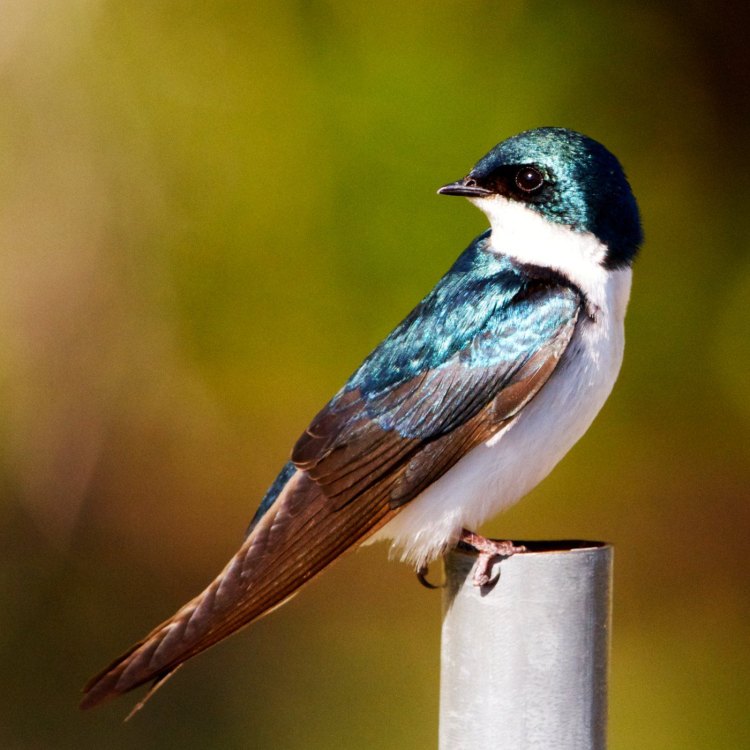
Swallow
- Adult Size: Varies depending on species
- Average Lifespan: Varies depending on species
- Reproduction: Sexual
- Reproductive Behavior: Varies depending on species
- Sound or Call: Varies depending on species
- Migration Pattern: Varies depending on species
- Social Groups: Colonies
- Behavior: Highly agile flyers
- Threats: Habitat loss, pollution, climate change
- Conservation Status: Varies depending on species
- Impact on Ecosystem: Pollinators, insect control
- Human Use: No significant human use
- Distinctive Features: Forked tail, long pointed wings
- Interesting Facts: Some species of swallows are known for migration over long distances
- Predator: Varies depending on species
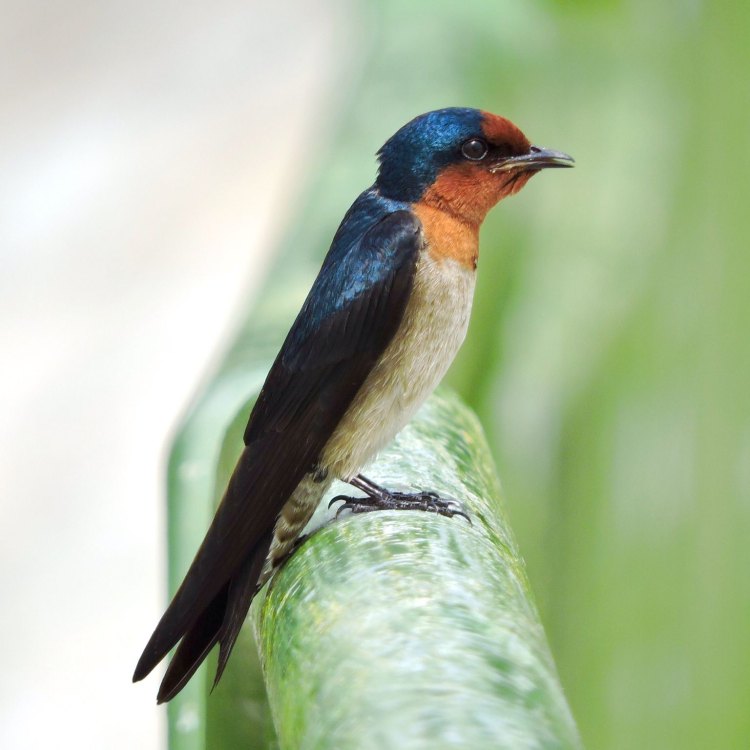
Hirundinidae
The Fascinating World of Swallows
From their agile flight to their distinctive forked tail, swallows are a fascinating and diverse group of birds. With over 80 species found worldwide, these birds inhabit a variety of habitats, from cities to remote forests. In this article, we will delve into the world of swallows, exploring their physical characteristics, behavior, and importance in the ecosystem.Size and Lifespan
The size of a swallow varies depending on the species PeaceOfAnimals.Com. The smallest swallow, the fairy swallow, measures only 4 inches in length and weighs less than an ounce, while the largest, the green swallow, can reach up to 9 inches in length and weigh over 2 ounces. This variety in size is reflected in their lifespan, with some species living only 2-3 years, while others can live up to 20 years in the wild.Reproduction and Behavior
Like most birds, swallows reproduce sexually, with males and females participating in courtship rituals before mating. The specific behavior during this time varies depending on the species. For example, some species, such as the cliff swallow, build communal nests made of mud and saliva, while others, like the tree swallow, prefer to nest in cavities, using feathers and grass as materials.Once mating is successful, female swallows lay a clutch of 2-7 eggs, depending on the species. The eggs hatch in around 14-20 days, and both parents take part in caring for the chicks until they are ready to fledge, which can take anywhere from 18-30 days.
Sound and Migration
Swallows are known for their distinctive calls, which vary from species to species. Some have high-pitched, chirping calls, while others have raspy or warbling songs Southern House Spider. These calls serve as a way to communicate with others in their colony or to attract a mate.One of the most intriguing aspects of swallows is their migration patterns. Some species, such as the purple martin, migrate over thousands of miles, flying from North to South America and back every year. This is an incredible feat, considering the size and weight of these small birds. Scientists believe that swallows use landmarks, stars, and the Earth's magnetic field to navigate during their long journeys.
Social Groups and Behavior
Swallows are highly social birds and often form colonies of varying sizes, from a few dozen individuals to thousands, depending on the species. These colonies serve as protection from predators, with the birds working together to forage and raise their young.One of the most impressive behaviors of swallows is their highly agile flight. These birds have long, pointed wings, which allow them to maneuver quickly to catch insects in mid-air. They are also skilled at catching water droplets, which they use for drinking during flights.
Threats and Conservation Status
Unfortunately, swallows face a variety of threats in the wild, with habitat loss being one of the most significant. Human activities, such as deforestation and urbanization, have led to a decline in suitable nesting sites for swallows. Pollution and climate change also pose a threat, affecting their food sources and disrupting their migration patterns.As a result, several swallow species are listed as vulnerable, endangered, or critically endangered on the International Union for Conservation of Nature (IUCN) Red List. Conservation efforts, such as preserving and creating suitable habitats, are essential in protecting these birds.
Importance in the Ecosystem
Swallows play a crucial role in the ecosystem, as they are efficient insect hunters. They feed on a variety of insects, including mosquitoes, flies, and beetles, making them valuable in controlling insect populations. They are also important pollinators, as they visit flowers to feed on nectar and inadvertently transfer pollen between plants.The decline of swallow populations can have a significant impact on the ecosystem. Without these insect-eating birds, insect populations can grow, leading to possible outbreaks and damage to crops and other plants. This showcases the important role swallows play in maintaining balance in the environment.
Human Use and Interesting Facts
Unlike some bird species, swallows do not have any significant human use. However, they are admired for their beauty and grace, with some cultures believing that swallows bring good luck and prosperity. They are also popular among birdwatchers, with many people traveling to witness their incredible migration journeys.One of the most interesting facts about swallows is their ability to fly long distances. The Arctic tern, a species in the same family as swallows, holds the record for the longest migration of any animal, flying up to 50,000 miles roundtrip every year. While swallows may not beat this record, some species are still known for their impressive journeys, with some traveling over 7,000 miles every year.
Predators
Different species of swallows face different predators, depending on their habitat. In urban and suburban areas, cats and other domestic animals can pose a threat to swallows. In wild areas, common predators include snakes, birds of prey, and larger mammals like foxes and raccoons. To protect themselves and their young, swallows have developed several defense mechanisms, such as vocalizations, mobbing, and camouflage.The Importance of Protecting Swallows
The world of swallows is full of wonder and beauty, but these birds are facing numerous threats. As such, it is crucial to protect their habitats and work towards their conservation. Simple actions, such as keeping cats indoors and avoiding the use of pesticides in our gardens, can go a long way in preserving swallow populations.Moreover, understanding the vital role that swallows play in the ecosystem can help raise awareness and appreciation for these birds. With their distinct features, impressive behavior, and incredible migration patterns, swallows are a true testament to the wonders of nature. Let us work together to ensure that future generations can continue to marvel at these remarkable birds.
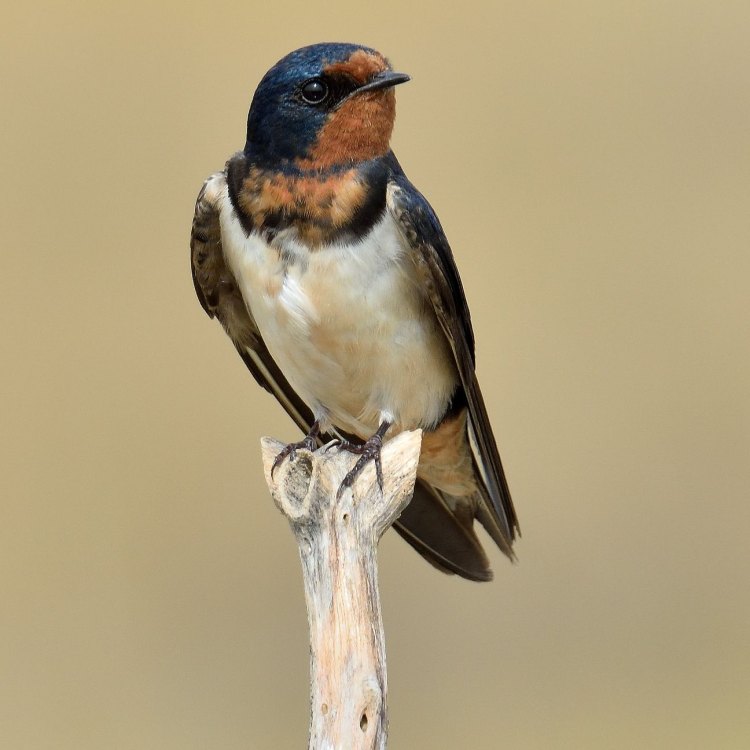
The Fascinating Facts About Swallows: A Master of the Sky
Disclaimer: The content provided is for informational purposes only. We cannot guarantee the accuracy of the information on this page 100%. All information provided here may change without prior notice.

